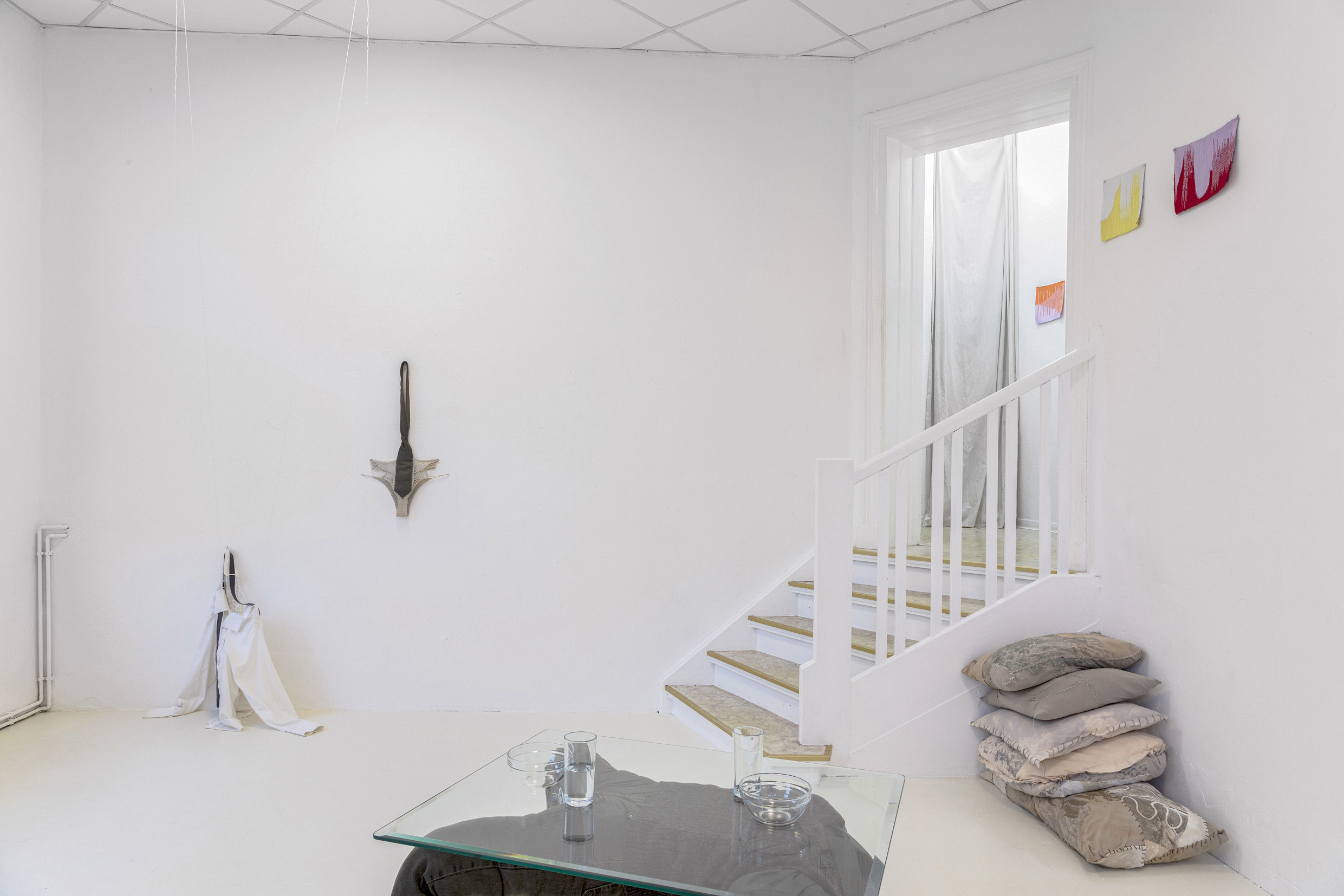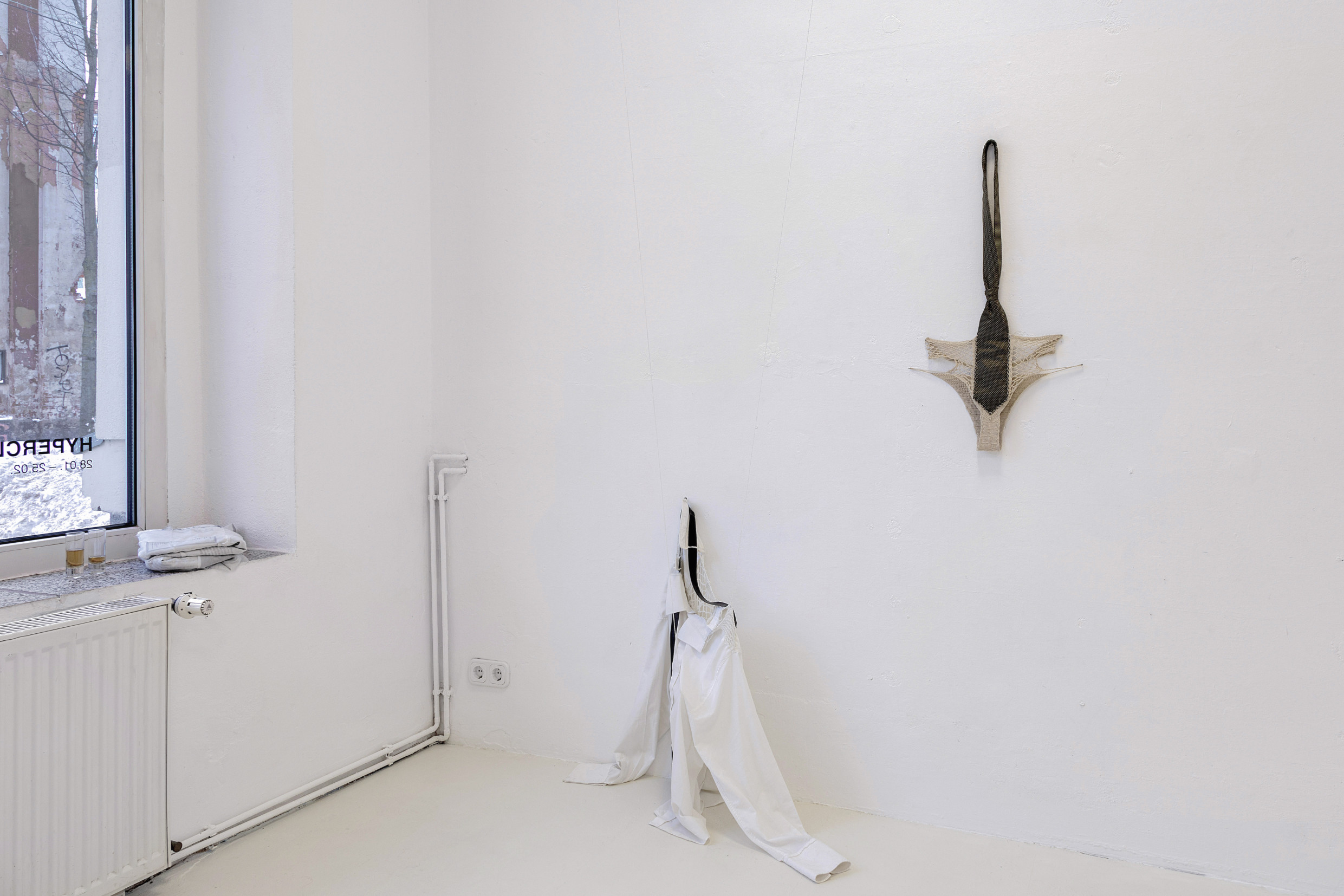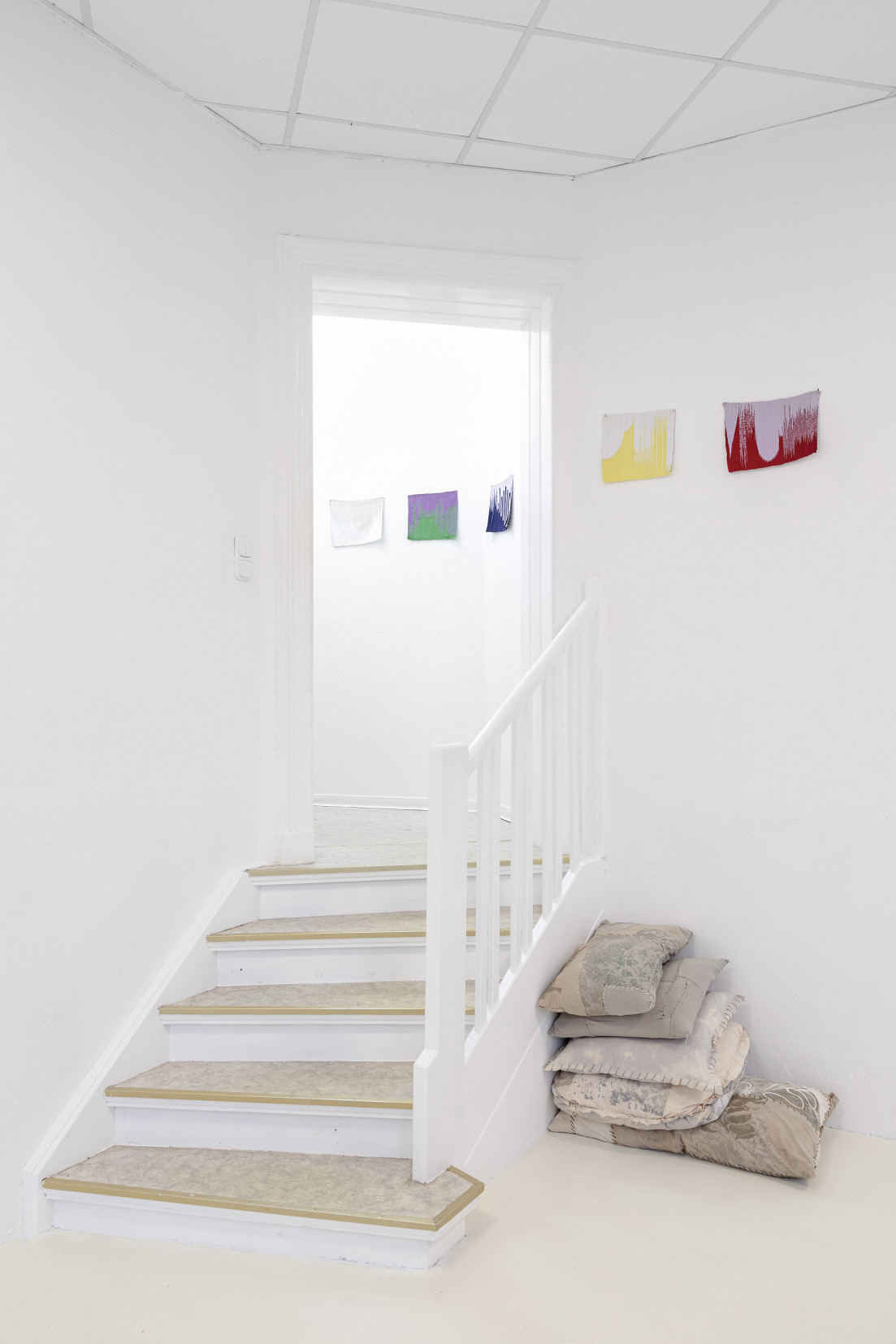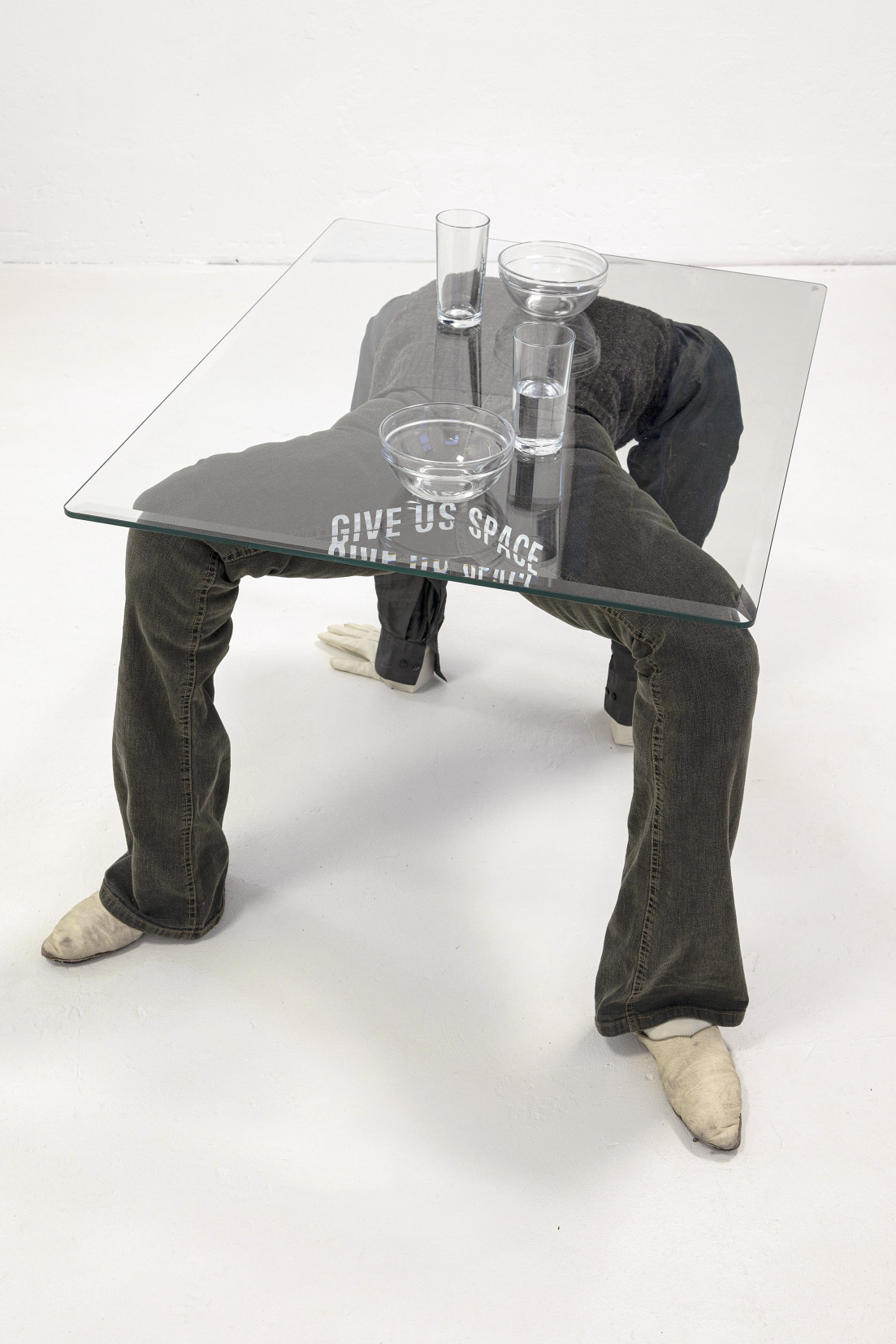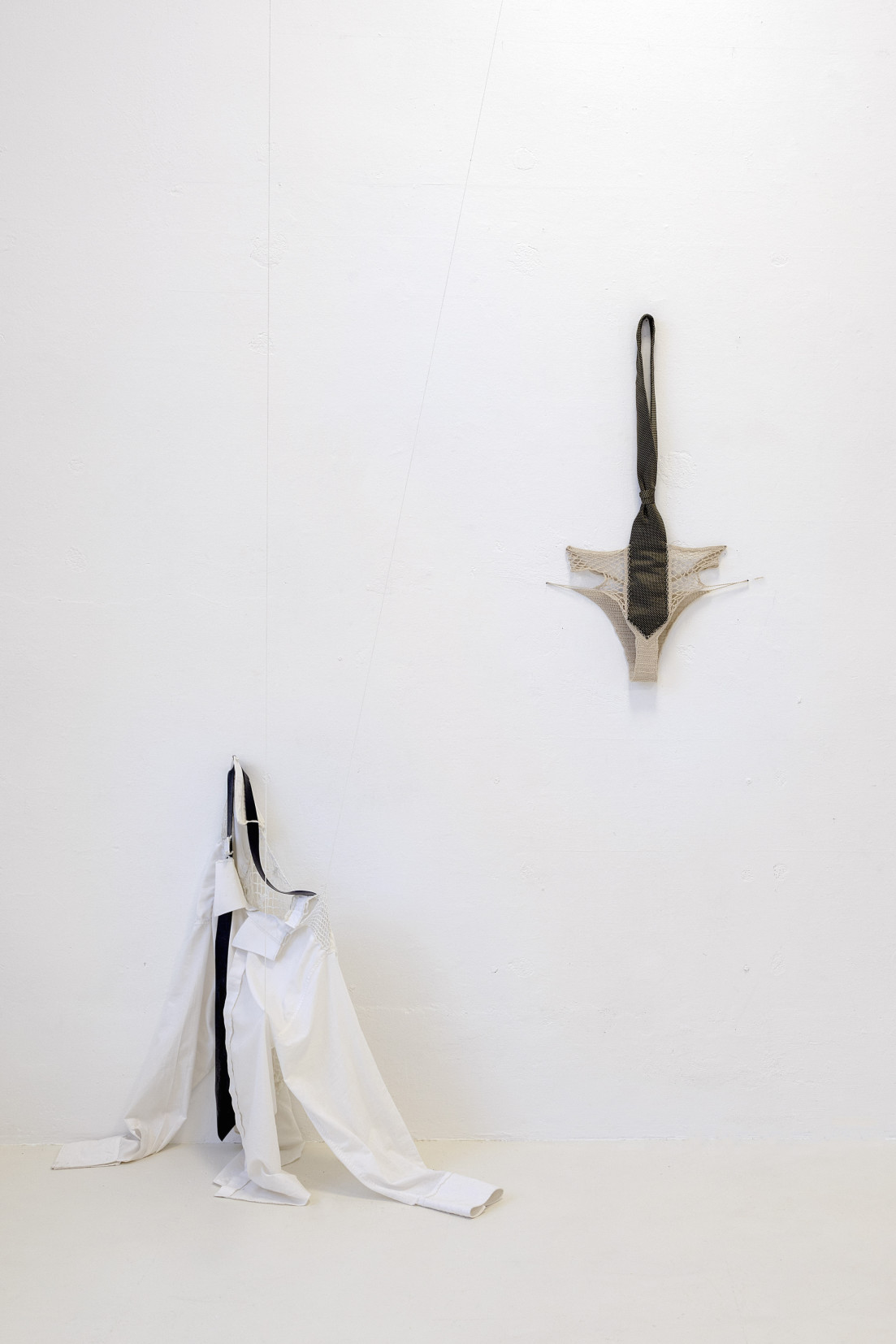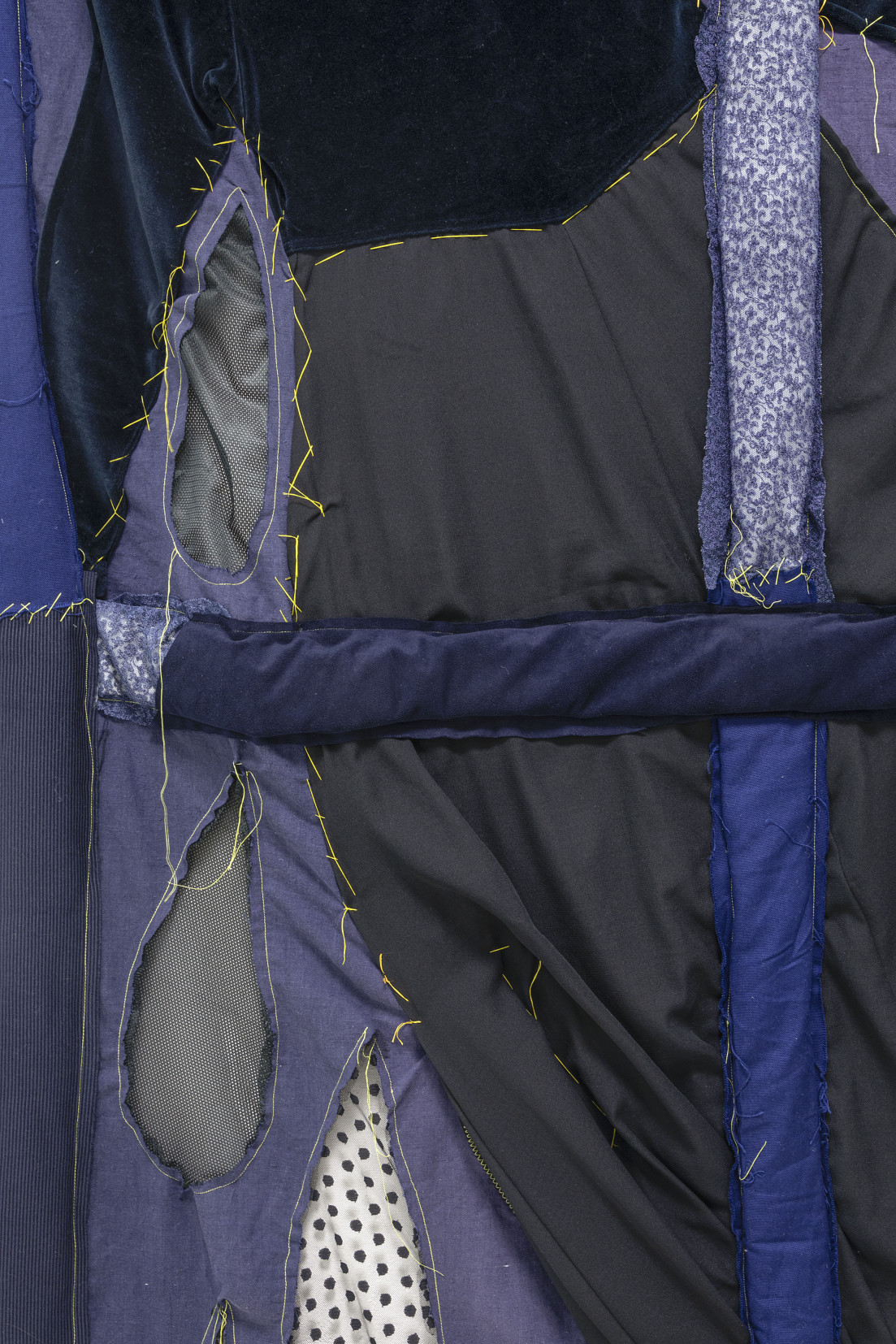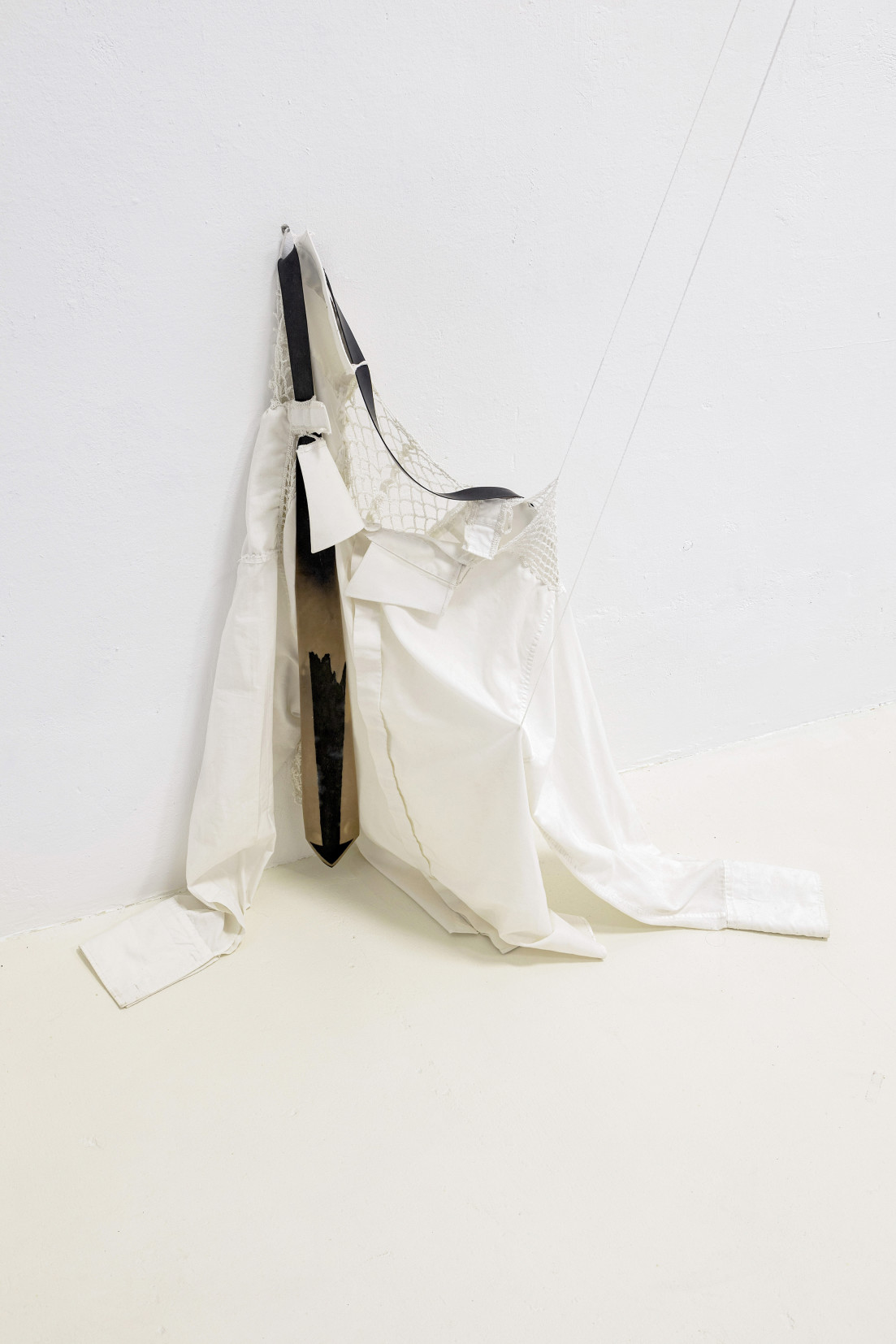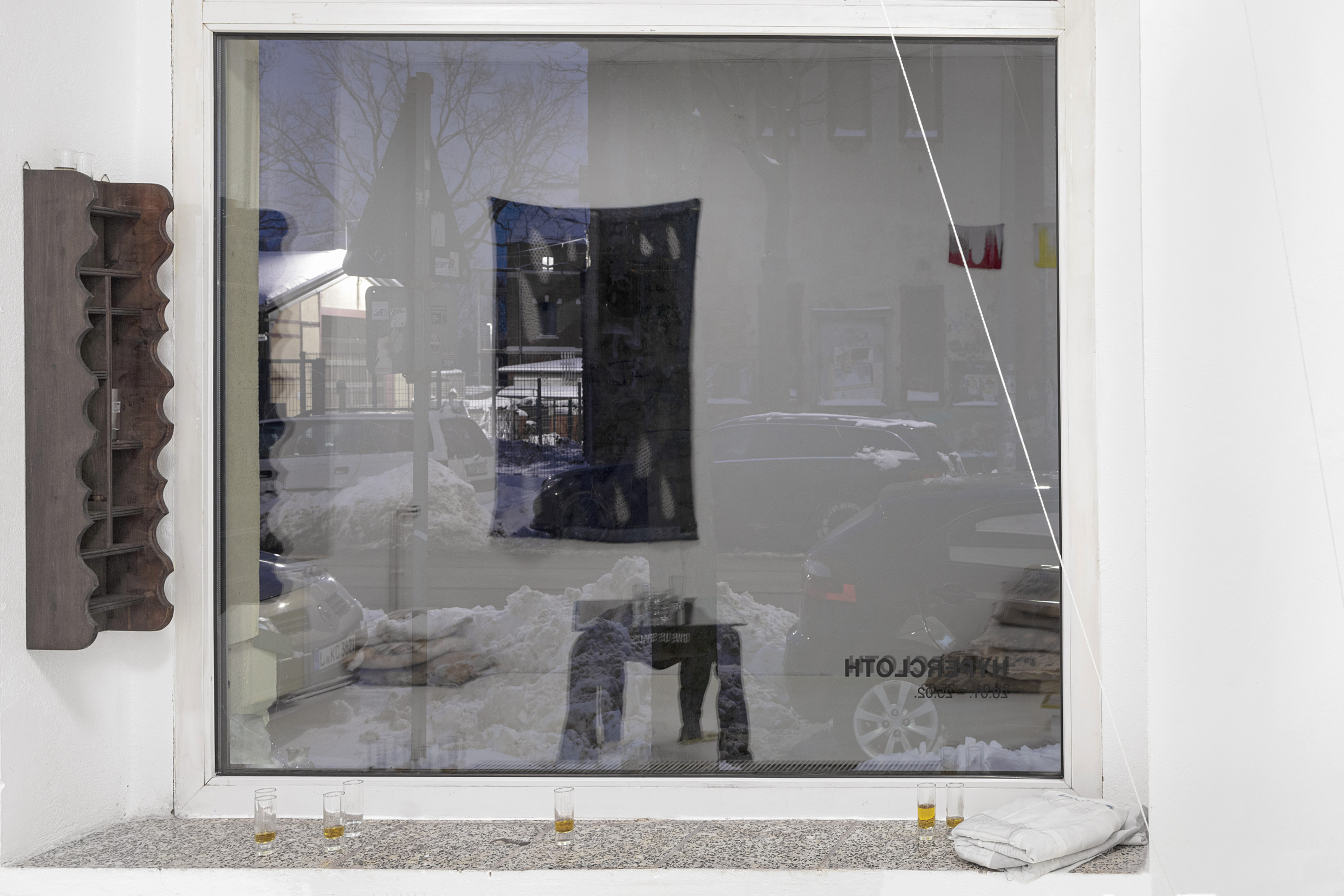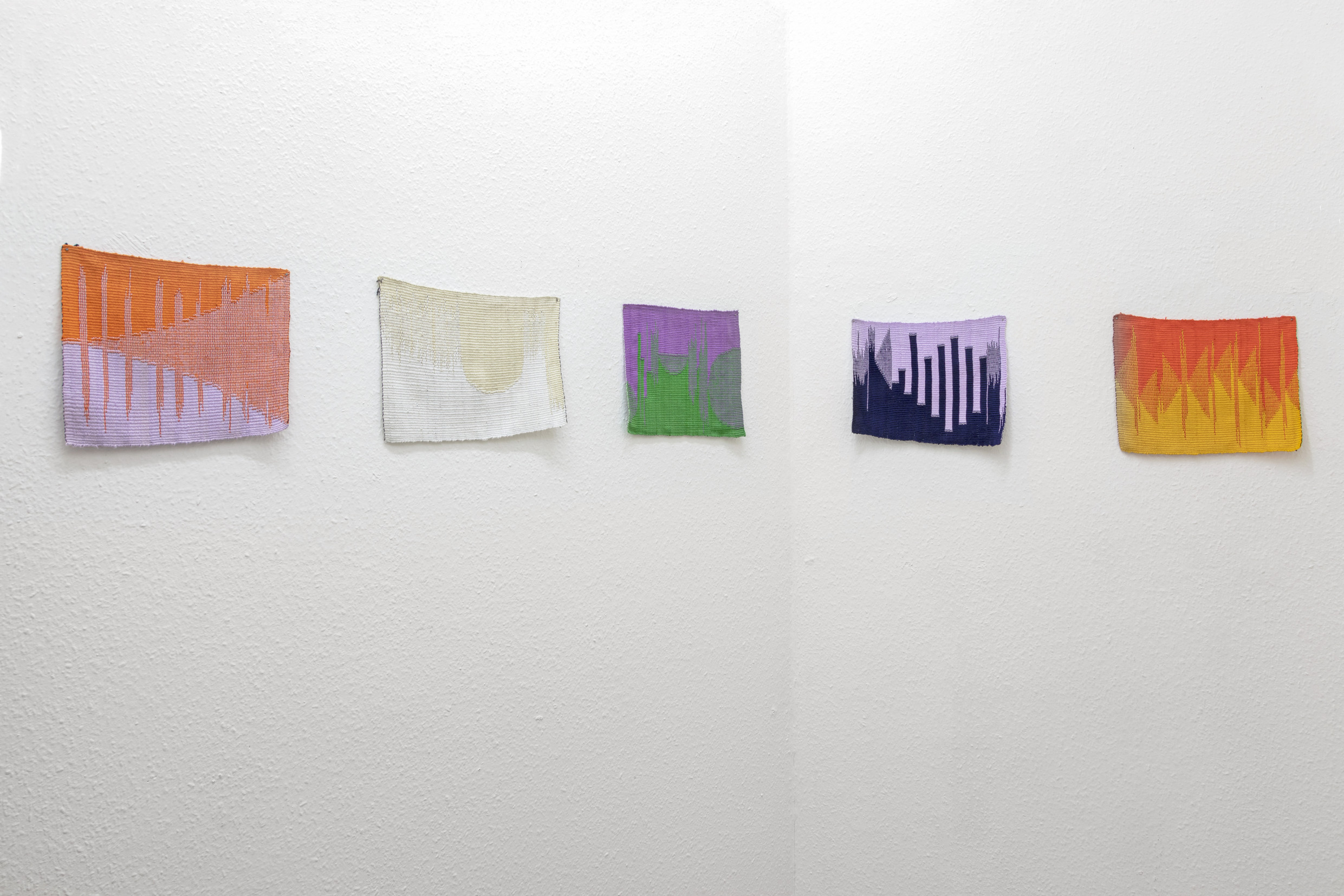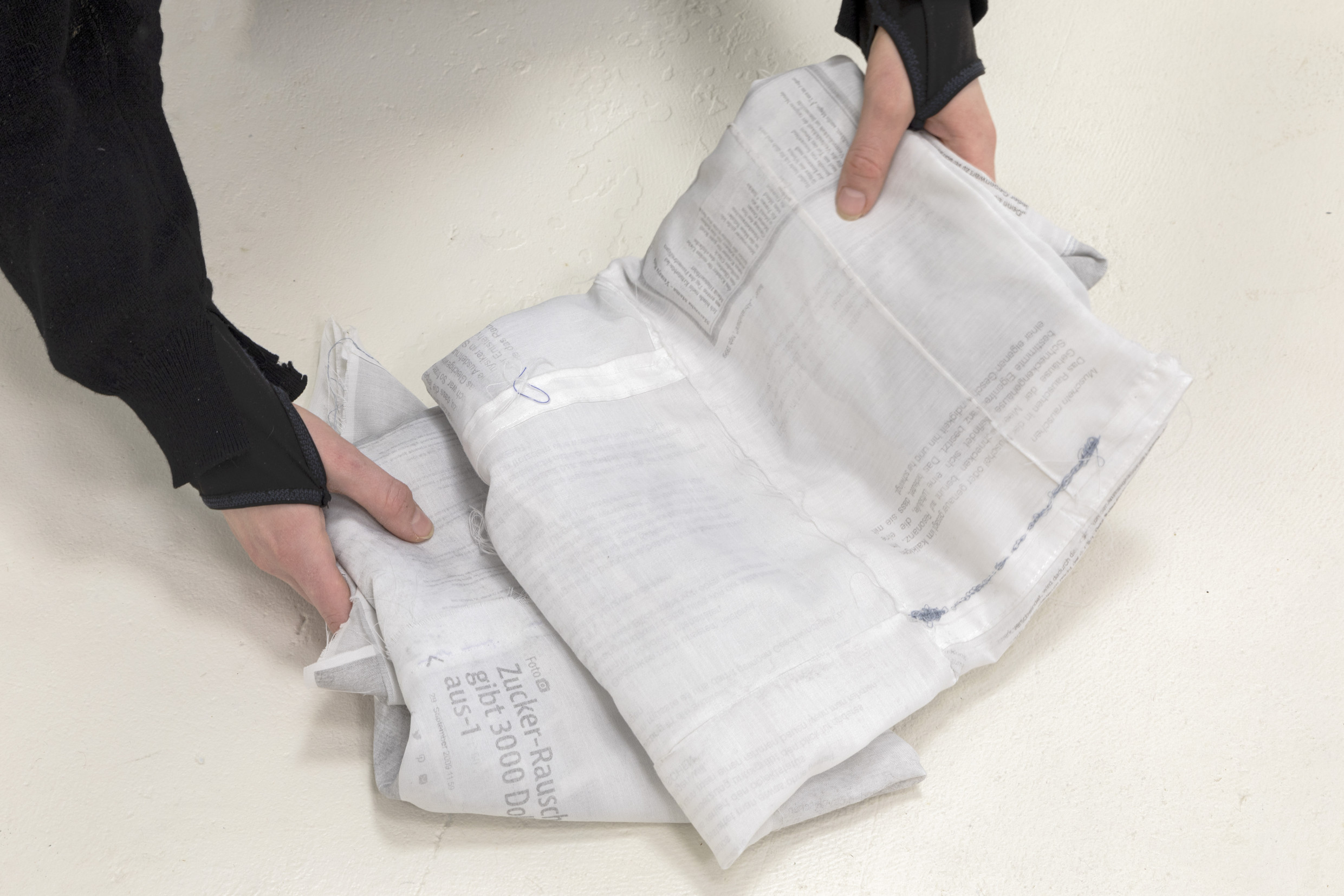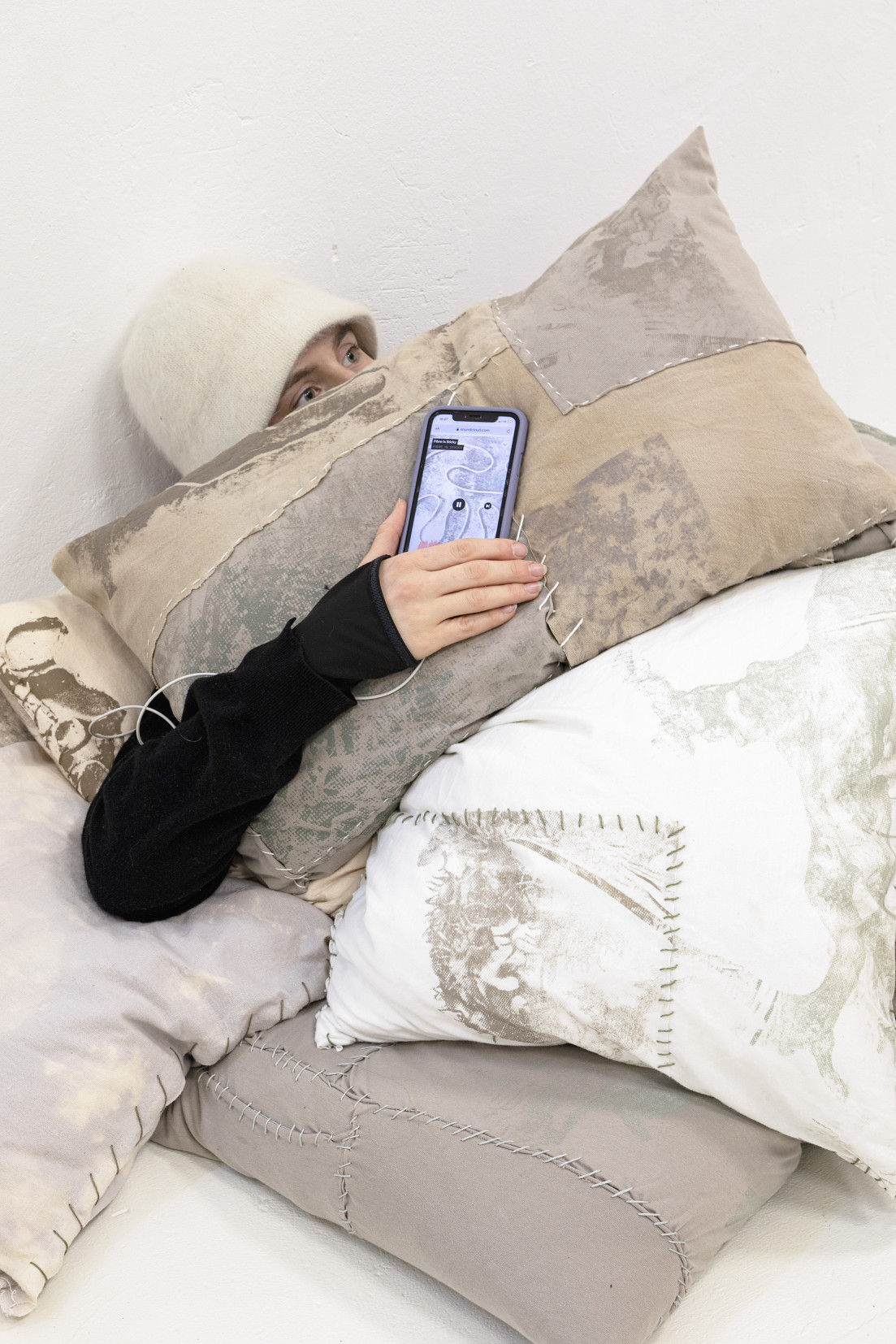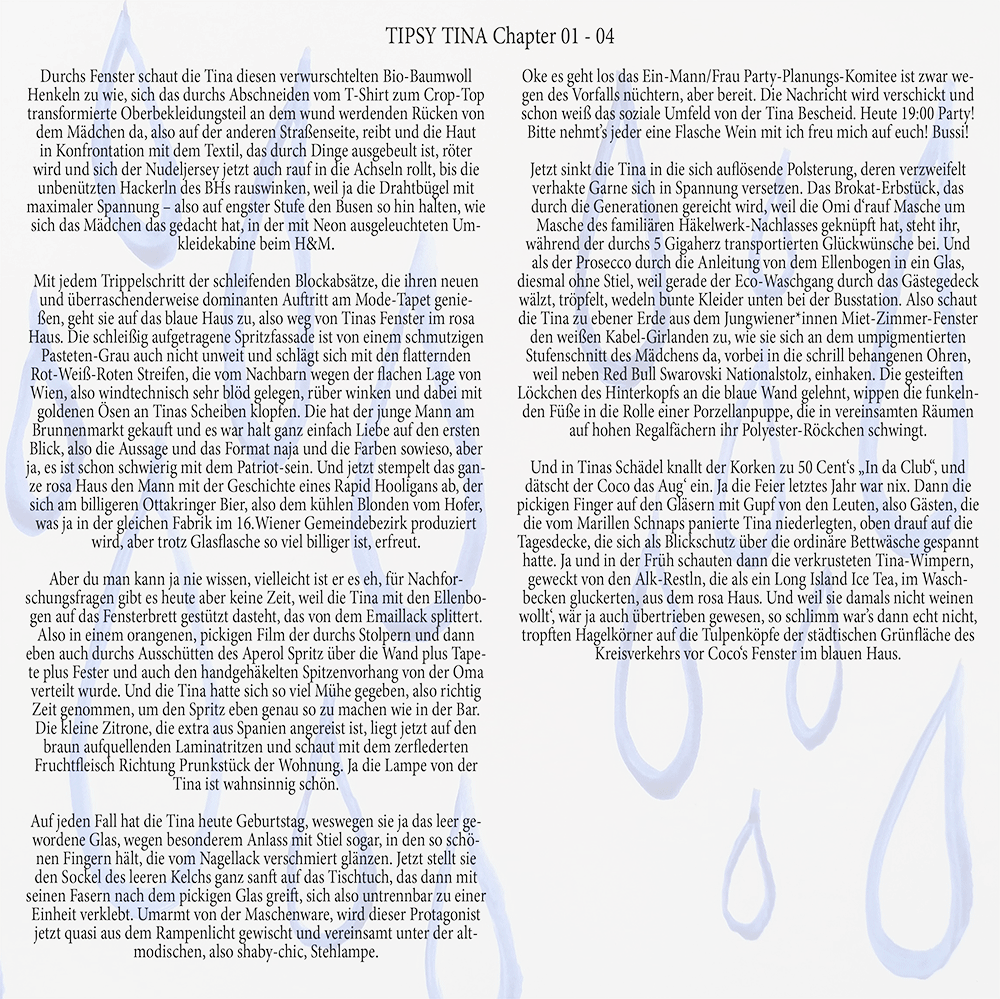HYPERCLOTH
Albin Bergström, Anna Hostek, Elena Buscaino & Mina Bonakdar, Marie Fillon, Marlene Schwarz & Lea Dippold, Sophia Eisenhut & Lara Hampe, Theresa Zwerschke
Curated by Lea Dippold
28.01.2021—25.02.2021
Eisenbahnstr. 141a, Leipzig
This is a space of fragments, a space of the incomplete. But it is not a lack of failure. Why tie up loose ends? Penelope knew it well – weaving by day, undoing by night, ‘a secret work always begun again’, and all the richer for this double action.
White satin shapes and reshapes: and if there are elements here of repetition [...] - where what cannot be ‘remembered’ returns in behavior, the past relived in the present - it is also true that each repetition has its own inflection distinct from the first, never the same. – Pennina Barnett, Folds Fragments and Surfaces: Towards a Poetics of Cloth, in Textures of Memory: the Peotics of Cloth (1999)
The idea of Hyper (Byung-Chul Han, 2005) reveals a contemplation that breaks open linear ways of thinking and offers new, hybrid viewings of processes and actions. A profoundly rhizomatic movement that uproots from a fixed framework thus can constitute interlinking, intertwining, intersewing, and interweaving. The Hypercloth serves as a direct symbol for this type of interaction and interdependence.
The exhibition at the non-profit exhibition space Fonda tries to offer a way of crossing set disciplines via multiple understandings of textiles. A merging of positions enables interweaving and reveals new mutual contextualizations, as their different approaches and processes elaborate on various meanings of materiality and their application in the context of working with textiles.
In the last years, textile-based practices have gained a reinvigorated appreciation, partly because it offers a complex network of multiples rather than individuals. The history of textiles, often examined but apparently never exhausted, appears in emancipatory practices and narratives – from poets (e.g. Anne Boyer: Garments Against Women), fashion designers (e.g. Rei Kawakubo, Comme des Garçons: “Cut to invent anew”), philosophers (e.g. Félix Guattari and Gilles Deleuze: Thousand Plateaus), artists and curators (e.g. Louise Bourgeois, Senga Nengudi, Justin Chance, Elle Russle, Rosemary Mayer), cultural studies (Hazel Clark, Diana Wood Conroy, and Janis Jefferies: The Handbook of Textile Culture) to handwork (e.g. Quilts of Gee’s Bend).
Textile works – their engravings and possibilities – offer pliability and philosophy which make textiles necessary for re-questioning genres, ends, and beginnings, contexts, linearity, and boundaries.
Unexpected encounters are necessary for a development that overcomes set borders. The form of this investigation can go beyond the one based directly on textile: the material used, is unpredictable in the sphere of the Hypercloth, as it inherently consists of gaps and connections.

Anna Hostek, “TIPSY TINA Chapter 04”, 2020, sound (1:25 min)
Voice: Henrietta Rauth
Sound: Florian Smetana
Text & Direction: Anna Hostek
Theresa Zwerschke, “Fibre Is Sticky”, 2020, sound (10:16 min)

